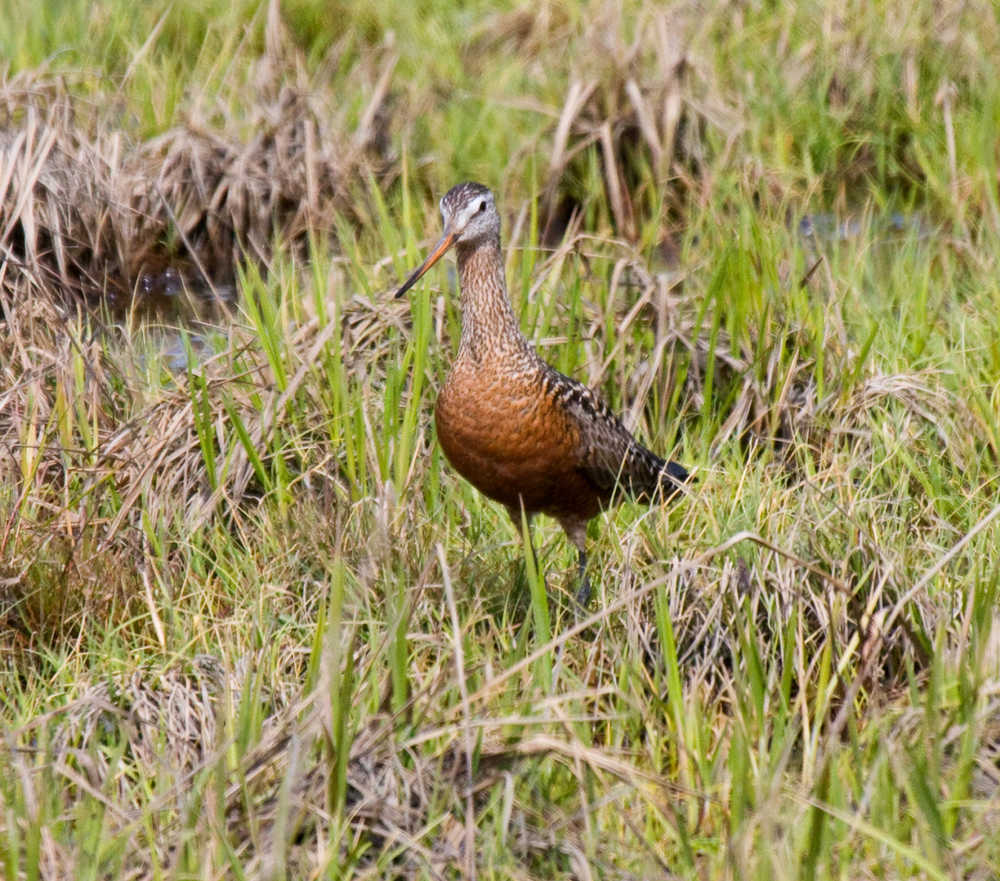Top 10 shorebirds sure to delight
Ask birders to list their top-10 favorite shorebirds and quickly their picks diverge. You might find five birds in common, like the popular and common western sandpipers, but then birders start throwing in birds like turnstones and snipes. The Kachemak Bay Shorebird Festival guide lists 38 shorebirds that can possibly be seen, including some rare and unusual species like godwits.
While not a super birder like featured speaker Neil Hayward, who broke the Big Year record of most species seen in North American in one year, I’ve become a serious shorebird festival maniac over the years. Here are my top-10 and favorite species likely to be seen and enjoyed.
For more information on species, check out the Kachemak Bay Birders website at kachemakbaybirders.org, or better yet, hang out with birders at the viewing stations this weekend or take some of the birding classes.
1. Western sandpipers: These are the big stars of the shorebird migration, the little peeps that fly in huge flocks. The smallest of shorebirds, they’re identified by their white chests and mottled brown backs.
2. Dunlins: Another common shorebird seen with western sandpipers is the dunlin. A bird about the same size as the westerns, these are identifiable by their black bellies.
3. Short-billed dowitchers: The “sewing machine” bird, dowitchers are rust-colored birds a bit larger than dunlin, identifiable by their bobbing heads that look like a sewing machine needle going up and down. The long-billed dowitcher is less common, but sometimes can be seen.
4. Greater or lesser yellowlegs: Experts can distinguish the greater and lesser yellowlegs, but the two species look a lot a like: gray and white birds with long yellow legs. They tend to be the first shorebirds of the season and can be seen alone or in pairs in puddles in the sloughs.
5. Black-bellied plovers: The first shorebirds to show up in larger groups, black-bellied plovers are about the size of a robin and have a black belly that runs up to their necks. Often their heads are pure white, but sometimes black-bellied plovers in transition have brown or mottled backs. They tend to be seen in Mud Bay.
6. Pacific golden plover: Similar to black-bellied plovers, these have more gold and brown on their bodies, and are more common at Green Timbers and Louie’s Lagoon on the Spit.
7. Semi-palmated plover: A small bird than the black-bellied plover, the semi-palmated plover has a distinctive ring around its neck. They’re seen in Mud Bay and on the rocks on the Kachemak Bay side of the Spit at low tide.
8. Wilson’s snipe: This is a bird more likely to be heard than seen. Listen for its haunting mating call made not by singing, but the rustling of its feathers as it dives.
9. Godwits: If you see larger, reddish birds, they’re most likely godwits or whimbrels. The godwits have beaks that turn out and the whimbrels have beaks that turn in. Three species of godwits can be seen in Kachemak Bay, the Hudsonian, bar-tailed and marbled.
10. Whimbrel: Whimbrels also are a larger shorebird and have a striped head pale bellies and a mottled back.


